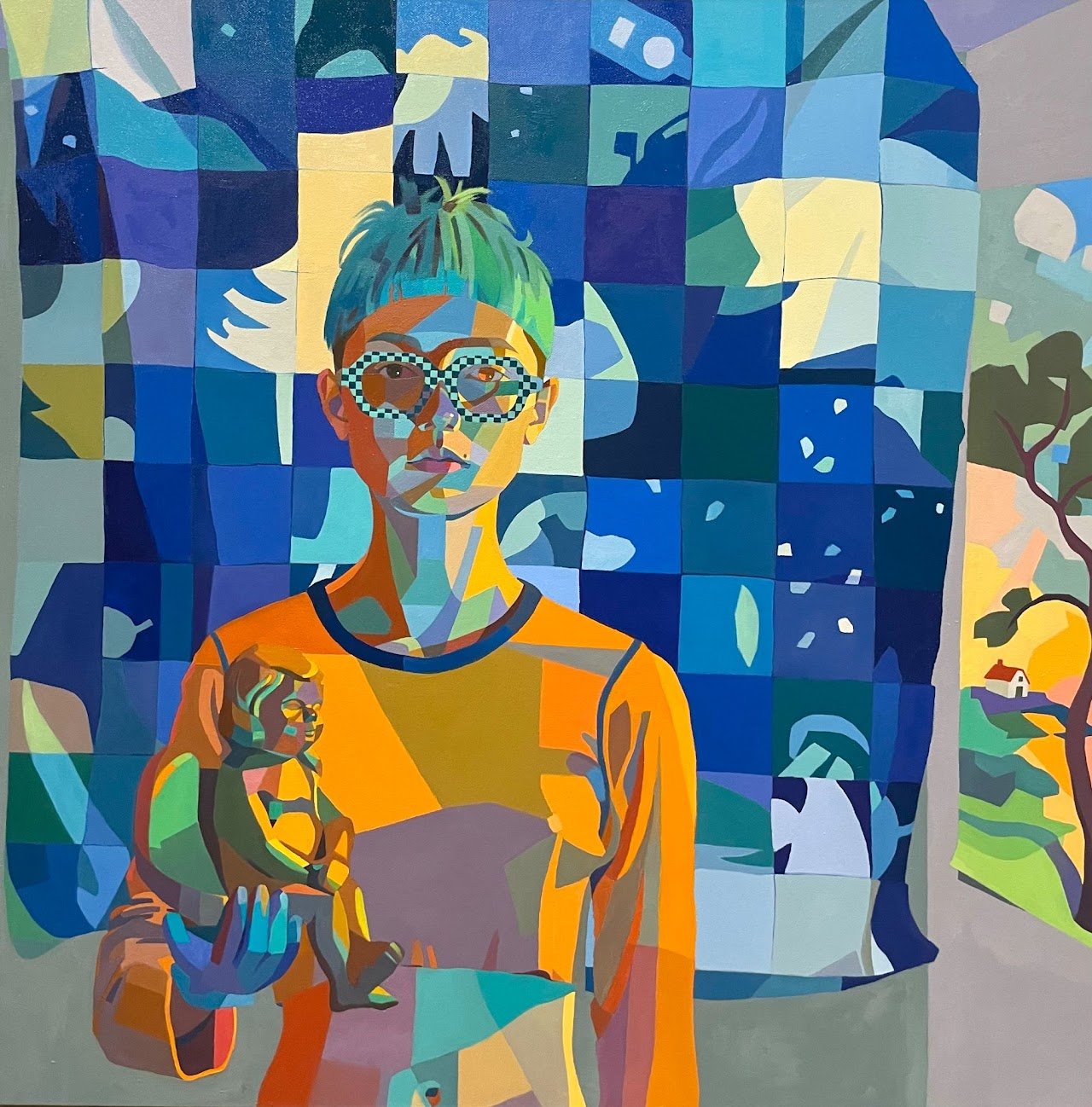엄마 (Mom), ㅁ(M), and 엄마의엄마 (Mom's Mom)
The three pieces ㅁ(M), 엄마 (Mom), and 엄마의엄마 (Mom's Mom) came about in what I could call a symbolic chain of events. It started with two large, blue, cotton cyanotype sheets that were donated to me which I decided to cut into squares and turn into a patchwork fabric. This patchwork can be seen in the background of ㅁ (M). Sewing these together made me think about my grandmother, who earned the pennies that would keep her family alive by sewing traditional Korean dresses called "hanbok", which is what she is wearing in the sculpture. She died when my mother was twenty years old, so I never got to meet her. Using my mom as an intermediary between myself and my grandmother, I created her bust featuring a dress made up of blue squares and a necklace of gold.
Rebecca, Shkeyrov, ㅁ(M) Visit Viewing Room
All these squares are connected to the Korean letter M which is in the shape of a square (ㅁ). The word for Mom in Korean has two M's, just like the English word. In my painting, you will find many squares (including the canvas itself). I am constantly searching for different types of squares and geometric shapes in my work. The repetition of the square, this M, the ㅁ (which also means "mouth" in Hanja), acts as a visual chant which unifies three generations of women, each generation more prosperous than the last.
The gold angel I am holding in my painting simultaneously symbolizes a potential fourth generation while also calling to mind my deceased grandmother. Therefore, this figure brings the generations back around full circle, like an ever-reverberating echo.
In Two Mothers, I wanted to create a still life to reunite my mother and her mother in one space for the first time in 40 years. For the setup, I included the new sculpture of my grandmother, a 2020 painting of my mother, cheekily titled Modiglimommy, and several Korean vases. The tallest vase is the closest thing we have to a family heirloom -- between my grandfather tossing all of my grandmother's belongings from fear of her ghost to my mother immigrating across an entire ocean, it is the only artefact I have come into contact from my mother's childhood apart from photographs.
Placing my own work within itself allows me to explore the surreality between real life and painting and to create infinite mirrors reflecting my paintings back onto the viewer. For example, the bouquet of sunflowers in Two Mothers are observed from a previous painting in which the sunflowers sprung from my imagination, and the sunflower on the table in Two Mothers is "real", and observed directly from life. However, ultimately, they are both reduced to flat shapes of mud and elevated to jewels of color. The line between imagined and observed becomes tenuous and subjective.
Rebecca Shkeyrov, 2023


